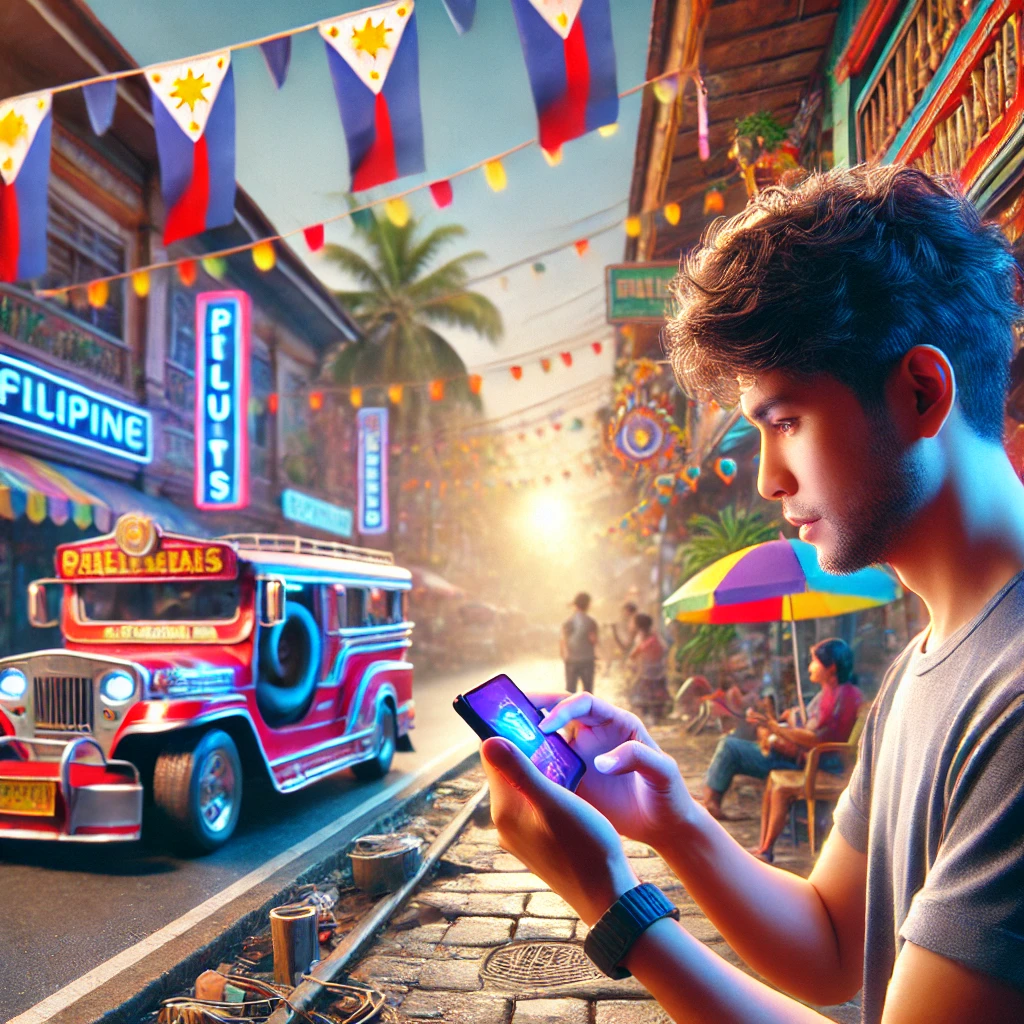Hey there, fellow language enthusiasts and slang aficionados! Ever wondered what the future holds for Filipino slang? Well, buckle up, because we’re about to take a wild ride through the ever-evolving world of Pinoy lingo. From the streets of Manila to the bustling online communities, Filipino slang is constantly shape-shifting, adapting, and surprising us with its creativity. So, let’s dive in and explore what’s on the horizon for this linguistic roller coaster!
The Evolution of Filipino Slang: A Brief History
Before we gaze into our crystal ball, let’s take a quick trip down memory lane. Filipino slang, like the country’s cuisine, is a delicious melting pot of influences. It’s a spicy mix of local dialects, Spanish leftovers, American pop culture, and a dash of millennial and Gen Z creativity. Remember when “jeproks” was the coolest way to say you’re awesome? Or when calling someone “jologs” was the ultimate insult? Those were the days!
From Jejemon to Millennial Speak
The early 2000s saw the rise of Jejemon, a form of text speak that would make English teachers weep. It was like someone threw the alphabet into a blender and hit puree. Fast forward to the 2010s, and we witnessed the birth of millennial-speak, with gems like “lodi” (idol) and “petmalu” (malupit or awesome) taking center stage. It’s like Filipino slang decided to play a game of linguistic Twister, and we’re all here for it!
Here’s a quick look at some popular Filipino slang terms and their evolution:
| Decade | Popular Slang | Meaning |
|---|---|---|
| 1990s | Jeproks | Awesome |
| Jologs | Tacky | |
| 2000s | Chika | Gossip |
| Kabog | Amazing | |
| 2010s | Lodi | Idol |
| Petmalu | Awesome |
The Digital Revolution: How Technology is Shaping Filipino Slang
Now, let’s talk about the elephant in the room – or should I say, the smartphone in our hands? Technology has been playing matchmaker between Filipino slang and the digital world, and boy, are they hitting it off! Social media platforms, messaging apps, and even memes are becoming the new breeding grounds for slang terms.
The Rise of Social Media Slang
Facebook, Twitter, TikTok – these aren’t just platforms for sharing photos of your lunch or dancing to the latest trend. They’re linguistic laboratories where new slang is born, tested, and spread faster than you can say “viral.” Remember when “charot” (just kidding) took over our news feeds? That’s the power of social media in action!
Memes: The New Slang Incubators
If social media platforms are the laboratories, then memes are the petri dishes where slang grows and multiplies. Filipino netizens have a knack for turning the most random phrases into overnight sensations. One day, you’re watching a local TV show, and the next thing you know, “pak ganern” is everywhere. It’s like linguistic whack-a-mole – you never know where the next slang term will pop up!
The Influence of Pop Culture on Filipino Slang
Pop culture has always been a major player in shaping Filipino slang, and it shows no signs of slowing down. From local TV shows to K-dramas, from Hollywood movies to Pinoy music, every piece of media is a potential goldmine for new slang terms.
Teleserye Talk
Filipino teleseryes (TV dramas) are not just sources of entertainment; they’re slang factories. Who can forget the iconic “You’re nothing but a second-rate, trying hard copycat!” that spawned countless memes and everyday usage? It’s like these shows have a secret mission to infiltrate our daily conversations with catchy phrases.
K-Drama Kraze
The Korean Wave has hit the Philippines harder than a typhoon, and it’s bringing a tsunami of slang with it. Suddenly, everyone’s saying “daebak” instead of “astig,” and “fighting!” has replaced “kaya mo ‘yan!” It’s like our vocabulary decided to take a vacation to Seoul and came back with souvenirs.
The Future of Filipino Slang: Predictions and Trends
Now, let’s put on our fortune-teller hats and peer into the future of Filipino slang. While we can’t predict exactly what new terms will emerge (if we could, we’d be millionaires), we can identify some trends that are likely to shape the slang landscape in the coming years.
Tech-Inspired Terminology
As technology continues to advance at breakneck speed, expect to see more tech-inspired slang. We might start hearing things like:
- “Naka-AI mode ka ba?” (Are you in AI mode?) – for someone who’s being unusually smart or efficient.
- “Mag-VR tayo!” (Let’s VR!) – suggesting to hang out virtually when meeting in person isn’t possible.
Eco-Friendly Expressions
With growing awareness about environmental issues, don’t be surprised if green-themed slang starts popping up:
- “Plastic ka!” might evolve from meaning “fake” to “environmentally unfriendly.”
- “Naka-solar power ka ba?” (Are you solar-powered?) – for someone who’s unusually energetic or positive.
Multilingual Mashups
Filipino slang has always been a linguistic smoothie, blending various languages. Expect this trend to continue and intensify:
- Taglish (Tagalog + English) will likely evolve into Taglechinese (Tagalog + English + Chinese) or even Taglekorean (Tagalog + English + Korean).
- We might hear phrases like “Xiexie po, oppa!” (Thank you, big brother!) in casual conversations.
The Role of Generation Z in Shaping Future Slang
If millennials were the architects of current Filipino slang, Gen Z are the mad scientists experimenting with linguistic DNA. These digital natives are growing up in a hyperconnected world, and their approach to language reflects that.
Meme-Speak Goes Mainstream
Gen Z’s fluency in meme culture is likely to push more meme-inspired slang into everyday use. Don’t be shocked if you hear your teenage niece say something like “It’s giving FOMO” instead of “Nakaka-inggit” (It’s envy-inducing).
Abbreviation Nation
In a world of character limits and short attention spans, Gen Z is mastering the art of abbreviation. We might see more complex ideas compressed into bite-sized acronyms:
- GGSS (Gandang-Ganda Sa Sarili) might evolve into GGSSSM (Gandang-Ganda Sa Sarili Sa Social Media)
- NBSB (No Boyfriend Since Birth) could become NBSBBNM (No Boyfriend Since Birth But No Malisya)
The Impact of Global Events on Filipino Slang
Global events have a way of leaving their mark on language, and Filipino slang is no exception. The COVID-19 pandemic, for instance, gave us gems like “quaranfling” and “pandemic pageant” (dressing up to take out the trash). As we move forward, expect major world events to continue influencing our slang vocabulary.
Climate Change Chatter
As climate change becomes an increasingly hot topic (pun intended), we might see more weather-related slang:
- “Parang El Niño ang puso mo” (Your heart is like El Niño) – for someone who’s being cold or distant.
- “Nag-La Niña ang mood ko” (My mood is having a La Niña) – when someone’s feeling gloomy or weepy.
Political Punchlines
Filipino humor often finds its way into political discourse, so expect more politically-inspired slang:
- “Mag-fact check muna tayo” (Let’s fact-check first) might become a humorous way to say “Are you sure about that?”
- “Nag-SONA ka na naman” (You’re giving a State of the Nation Address again) – for someone who’s talking too much or too formally.
The Challenges of Predicting Slang
While it’s fun to speculate about the future of Filipino slang, it’s important to remember that slang, by its very nature, is unpredictable. It’s like trying to forecast the weather in the Philippines – you might have some idea, but there’s always room for surprises.
The Spontaneity Factor
Some of the most popular slang terms arise spontaneously from unexpected sources. Who could have predicted that “pak ganern” would become a nationwide sensation? Slang often defies logical prediction, springing up from viral videos, memes, or even politician gaffes.
The Shelf Life Conundrum
Another challenge in predicting slang is its often short shelf life. What’s cool today might be cringe-worthy tomorrow. Remember when everyone was saying “wazzup”? Now, using it might get you some serious eye-rolls from the younger crowd.
Here’s a look at how quickly slang can rise and fall:
| Slang Term | Peak Popularity | Current Status (as of 2022) |
|---|---|---|
| Jeproks | 1990s | Rarely used |
| Chika | Early 2000s | Still in use |
| Lodi | 2010s | Declining |
| Petmalu | Late 2010s | Still popular |
The Importance of Context in Filipino Slang
As we look to the future of Filipino slang, it’s crucial to remember the importance of context. Filipino humor and slang often rely heavily on context, double meanings, and cultural references. This contextual nature makes Filipino slang both fascinating and challenging to predict or translate.
The Double Meaning Dilemma
Many Filipino slang terms have multiple meanings depending on the context. Take “bongga” for example. It can mean fabulous, excessive, or even troublesome, depending on how it’s used. As Filipino slang evolves, expect this love for double (or triple) meanings to continue.
The Cultural Connection
Future slang will likely continue to draw heavily from Filipino culture, including:
- Local celebrities and influencers
- Popular TV shows and movies
- Current events and social issues
- Regional dialects and traditions
This cultural grounding is what gives Filipino slang its unique flavor and makes it a true reflection of the Filipino spirit.
Embracing the Unpredictable: The Joy of Filipino Slang
As we wrap up our journey through the potential future of Filipino slang, one thing is clear: whatever happens, it’s going to be an exciting ride. Filipino slang, with its creativity, humor, and adaptability, is a testament to the vibrant and ever-evolving nature of Filipino culture.
So, whether you’re a language enthusiast, a curious foreigner, or a proud Pinoy, keep your ears open and your slang game strong. Who knows? The next big slang term might be just around the corner, waiting for you to coin it. And remember, in the world of Filipino slang, the only rule is that there are no rules – except maybe “bawal ang KJ” (no party poopers allowed)!
As we say in the Philippines, “Abangan ang susunod na kabanata!” (Stay tuned for the next chapter!). The future of Filipino slang is bright, bewildering, and absolutely “bongga”!
Disclaimer: This blog post is based on linguistic trends and cultural observations up to 2022. Language evolves rapidly, and new slang terms may have emerged since then. While we strive for accuracy, some predictions may not materialize as expected. If you notice any inaccuracies or have updates on Filipino slang, please let us know so we can keep our content as current and accurate as possible.




